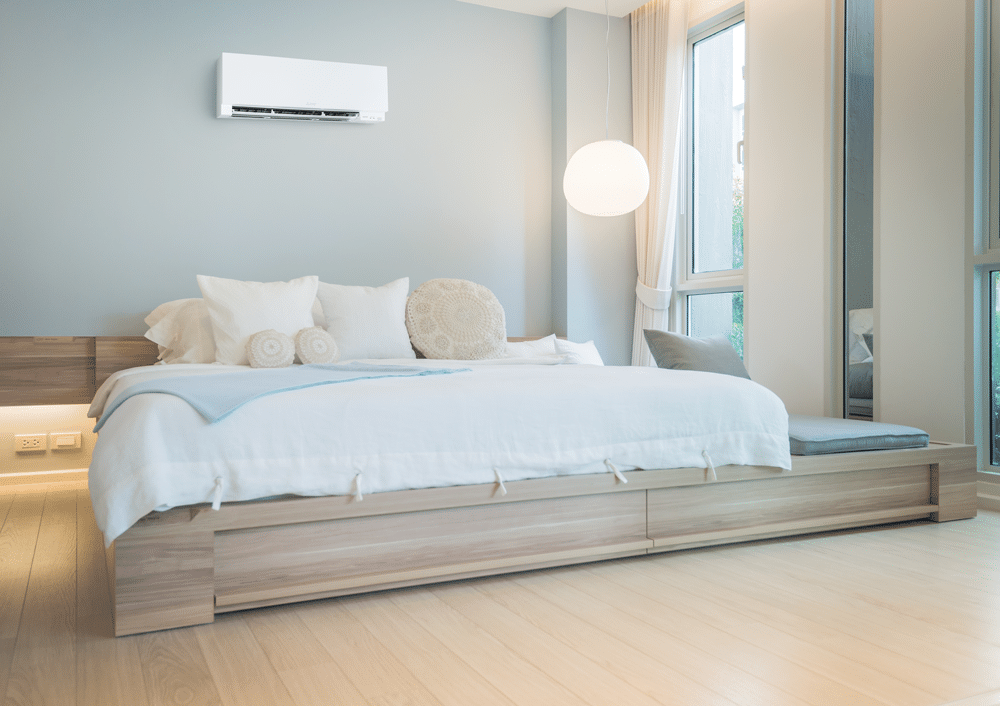When you are investing in a new heating system for your home or office, you have several different options. Two of the most popular options are ductless systems and electric baseboard heaters. If you’re trying to choose between these two systems, check out how they compare in a few key areas.

Zone Controls
Both baseboard heaters and ductless heating units can feature zone controls. You can attach a thermostat to each of your baseboard heaters, just as you can connect separate thermostats and remotes to the indoor air handling units that come with your ductless heating system. Thanks to the zone set up, both electric baseboard heaters and ductless heating can work in a home addition, an attic, or similar areas, but they can also work in large buildings full of a variety of units and lots of floor space. Although baseboard electric heaters and ductless systems match up well in this category, they have a lot of differences in other categories.
Combined Heating and Cooling
With electric heating, you only get the heating. You don’t get the benefits of cooling unless you install a separate air conditioning system, and because there’s no central system to tap into, you either must put in an HVAC system with ductwork or you must set up separate wall units in each individual room of your home or commercial building.
In contrast, when you opt for a ductless system, you can put in units that handle both heating and cooling. In fact, ductless units first became popular for their cooling capabilities, and it’s only in relatively recent years that homeowners in cold climates have been turning to these systems for their heating needs as well. Note that the heat pumps associated with ductless systems can provide heating in temperatures as low as -13° F.
Energy Efficiency
Baseboard electric heating can be an efficient way to heat your home, but to work correctly, these units usually need to be installed on walls underneath windows. In this position, they can combat the cold air that comes through the window.
According to the Department of Energy, ductless systems can reduce your electricity usage by 50% compared to baseboard heaters. Unfortunately, baseboard heaters often tend to be installed incorrectly, and as a result, they lose heat between the unit and the wall. If your baseboard heaters are installed incorrectly, these numbers may be even higher, and your savings may be more pronounced.
Safety Factors
In this area, ductless systems and electric heaters are fairly comparable. Neither system burns fuel internally, and by extension, you don’t have to worry about explosions or the risk of carbon monoxide poisoning. You also don’t have to deal with leaky radiators or the chance that a radiator might burst.
Humidity Levels
Often, baseboards heaters tend to produce a very dry heat, and after long periods of disuse, they may produce a burning smell when you turn them on. You don’t face either of these issues with a ductless system. In fact, many ductless systems have a humidity setting. As a default, these systems add moisture to the air, but you can also set them to “dry” as needed. If you’re tired of itchy throats, irritated noses, and the other issues that tend to pop up in overly dry atmospheres, you may want to make the switch from baseboard heaters to a heat pump connected to a ductless HVAC system.
Installation Considerations
With baseboard heaters, you have a very limited option on where to install them. They must be by a window along the floor. In contrast, if you opt for a ductless system with a heat pump, you get a lot more flexibility on where you install the indoor units.
Ductless systems feature an outdoor unit with one or more indoor air handling units. Often, the indoor units are installed near the ceiling along the top of an exterior wall, but you can also choose units that go in the wall near the floor, units that are flush with the ceiling, or units that hang suspended from the ceiling. The ceiling units can come with multiple outlets, so you can control where the hot air goes in your room.
No Ducts
Although the most popular electric heaters are baseboard heaters which don’t have ductwork, there are a few electric forced air heaters that connect to ductwork. Unfortunately, ducts also lose hot air. If the ducts are in your attic or under your floor, the warm air escapes into these unused spaces, and it doesn’t get to your living areas. That drives up your bills, promotes inefficiency, and increases your carbon footprint. This pattern never happens with a ducted system, so you don’t have to worry about losing heat in that way.
At N.E.T.R., Inc, we are highly qualified installers of ductless heating and cooling systems. We have extensive experience working with both commercial and residential clients, and we can help you decide which system is right for your needs and your budget. To learn more about ductless heating or to get a quote, contact us today.

